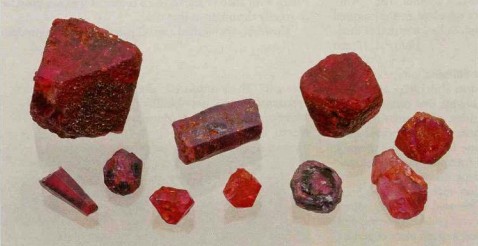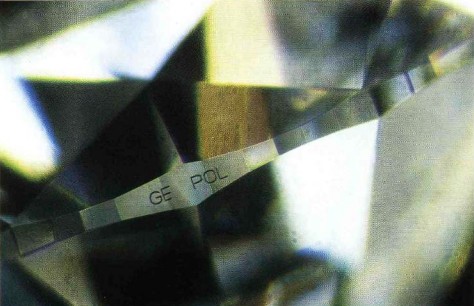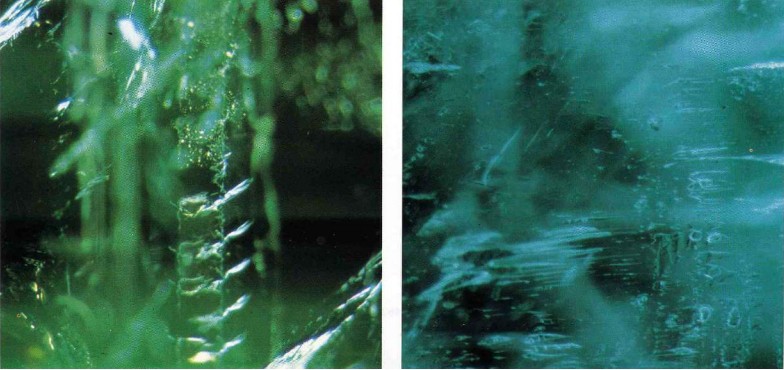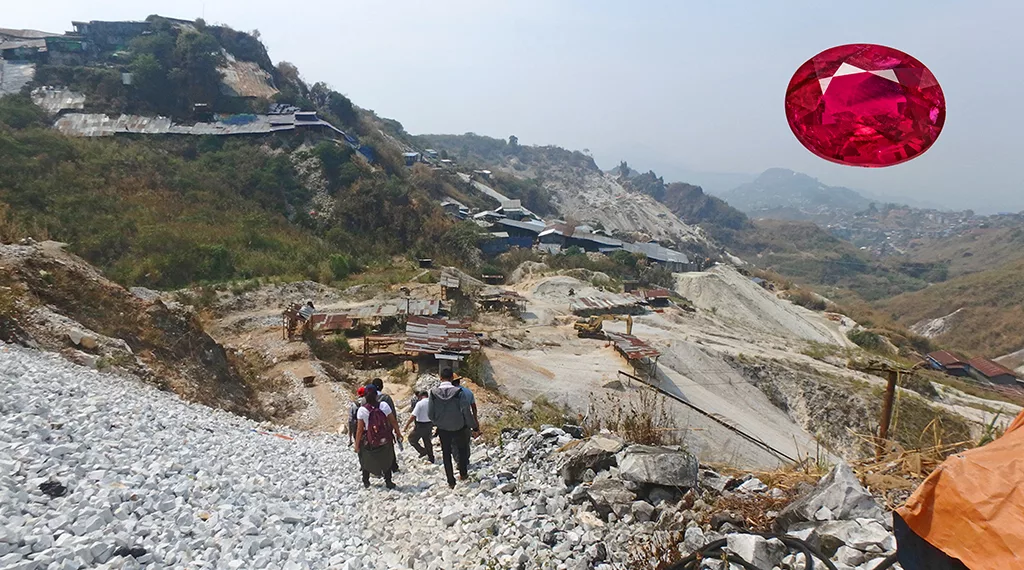
Heated ruby from Mong Hsu (Myanmar) with blue zone
by Dr. M.S. Krzemnicki, first published in Facette 27 (June 2021)

Rubies from Mong Hsu, located about 250 km southeast of the Mogok Stone Tract, entered the gem trade in the early 1990s. Since this time the Mong Hsu mines remain an important source for Burmese rubies, specifically for stones of smaller sizes (2 ct and below).
Rubies from Mong Hsu generally show a saturated red colour, but often contain dark blue (to dark grey) zones (Figure 2), which may to some extent negatively influence the red colour of these rubies. In addition, these ruby crystals are often quite fractured. As a consequence, a large majority of these rubies are heat treated in oxidizing conditions to get rid of the blue zones. The heating is often assisted with a borax flux to artificially ‘heal’ pre-existing fractures.
In the past few years, however, we can see a shift of preference in the high-end trade and by consumers towards untreated gems. Therefore, suppliers of Mong Hsu rubies do not necessarily heat most of their material anymore, but rather try to keep them as unheated stones. By carefully choosing an appropriate cutting style and orientation they succeed in many cases to minimize the negative effect of the blue colour zones and fissures.
For quite a long time, blue zones in Mong Hsu rubies were considered in the trade as a good indicator that the stone was unheated. Unfortunately, it was later revealed that this simple criterion is not valid in all cases.
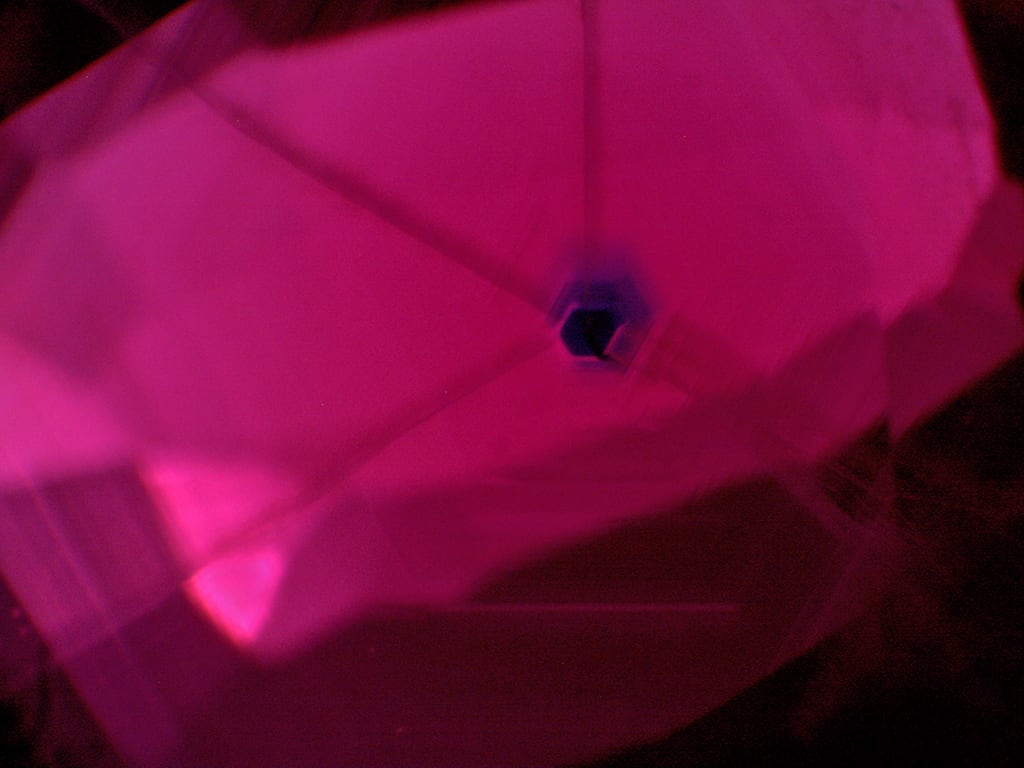
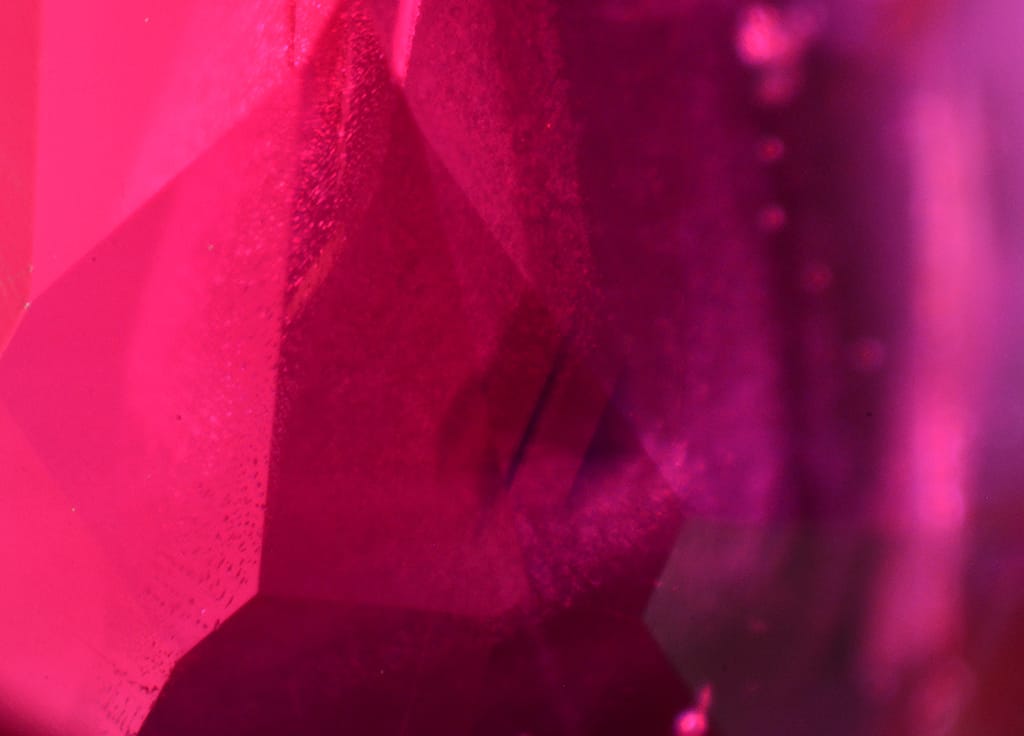
Recently, we had the chance to test a series of Mong Hsu rubies ranging in size from 0.54 ct to 2.01 ct. Testing at SSEF means that each of these rubies is fully characterised, based on microscopic observations, chemical and structural analyses. Interestingly, one of these rubies showed small but distinct blue colour zoning (Figure 3). However, it also revealed an infrared spectrum (FTIR) with distinct OH- related absorption peaks that are characteristic for heat treated rubies from Mong Hsu (red coloured spectrum in Figure 4).
In contrast to this, all other Mong Hsu rubies from this series of stones were unheated. They not only showed blue colour zones but also FTIR spectra with broad absorption bands (blue coloured spectrum in Figure 4) related to finely dispersed inclusions of the Al-hydroxides diaspore and boehmite (Smith 1993), typical for unheated rubies from Mong Hsu.
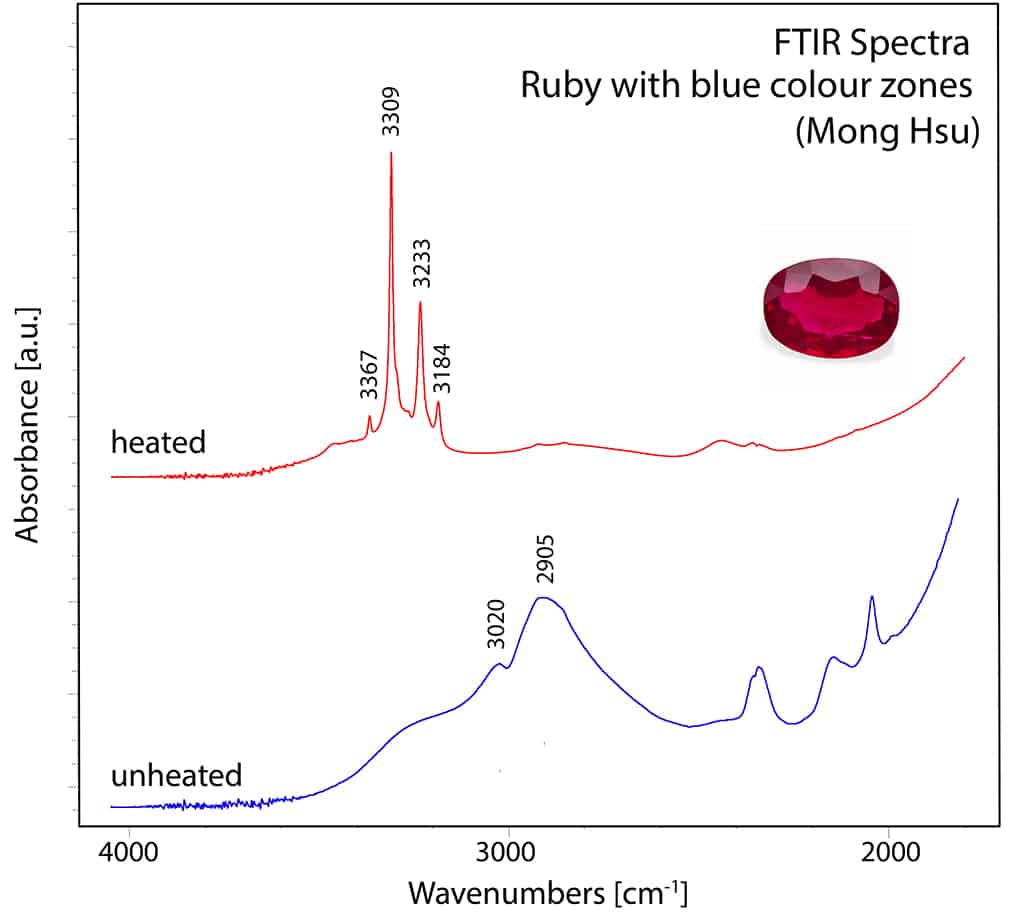
To summarize, the described heated ruby can be considered a valuable specimen to remind gemmologists that a blue colour zone in a Mong Hsu ruby, although often encountered in unheated stones, can also occur in a heated stone. Only by combining microscopic observations and spectroscopic results is it possible to fully characterise a gemstone and to come to reliable and correct conclusions.
Want to learn more about rubies?
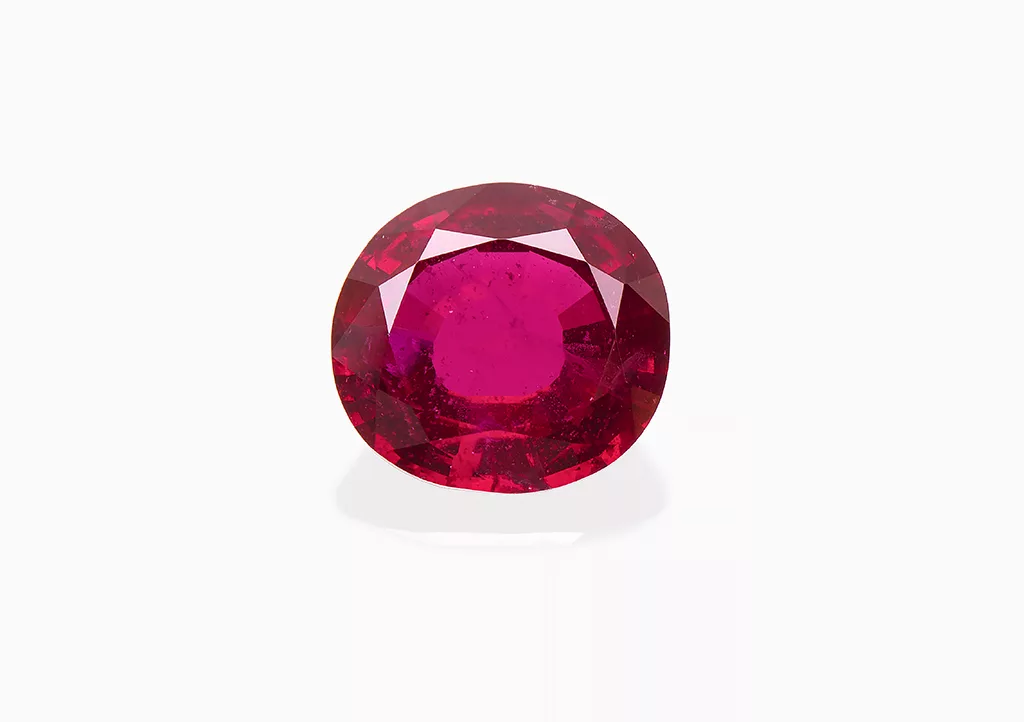
Sign up for our free online course: Introduction to rubies
